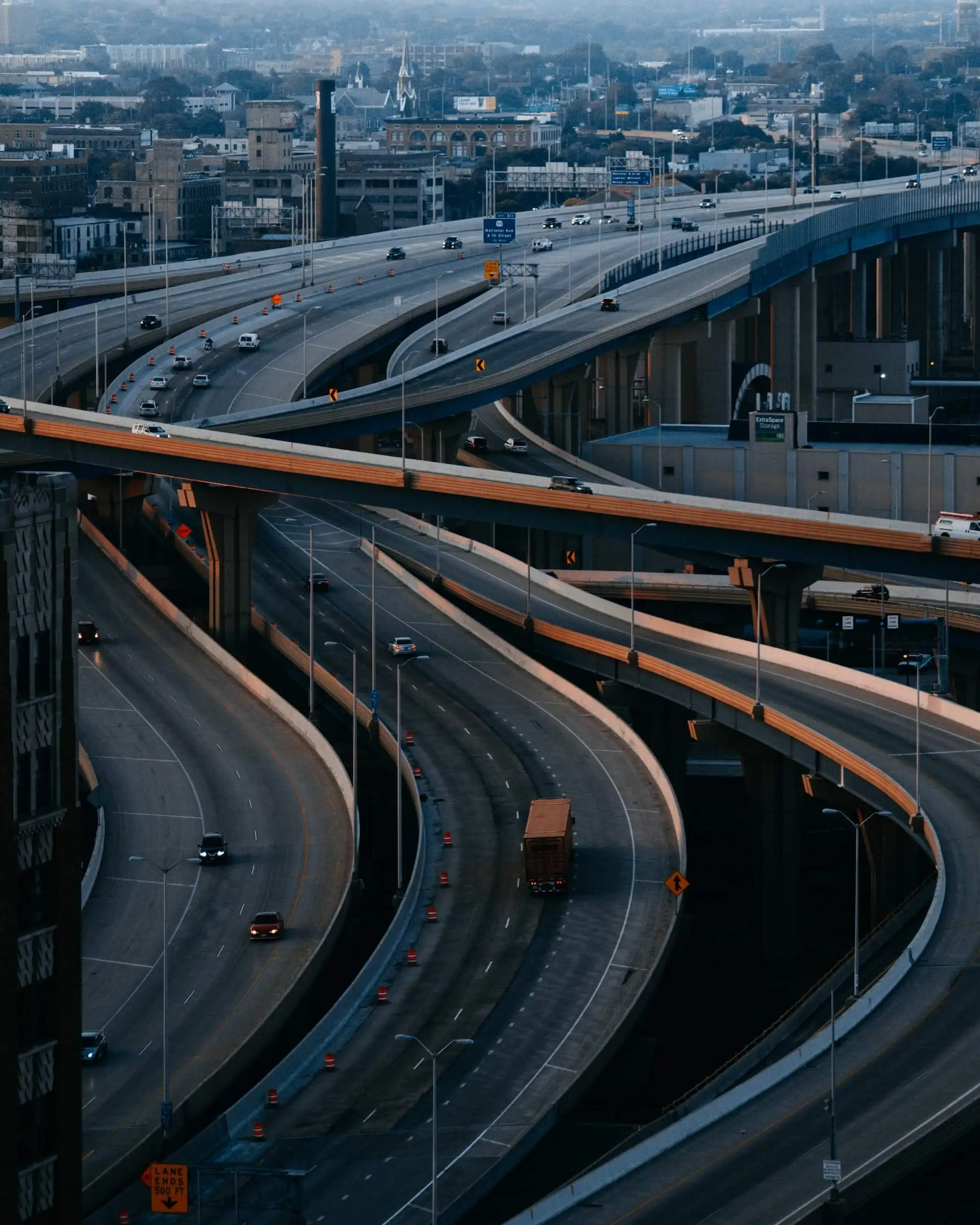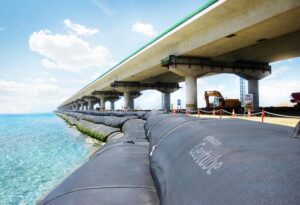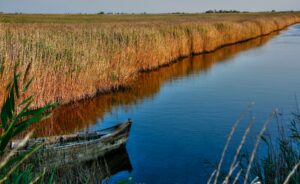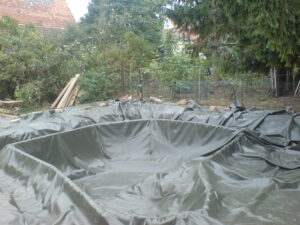Govt Project – Pond Construction in Madhya Pradesh: A Case Study on Ocean HDPE Liner (500 Micron)
Introduction
Government-led pond construction projects play a crucial role in water conservation, irrigation, and groundwater recharge, particularly in water-stressed regions. Madhya Pradesh, known for its extensive agricultural landscape, has been at the forefront of such initiatives to enhance water security. Ocean Non Wovens was proud to be a part of one such government-backed pond construction project, supplying and installing 10,200 SQM of Ocean HDPE Liner – 500 Micron to ensure long-term durability and water retention efficiency.
Table of Contents
The Role of Geosynthetics in Pond Construction
Government pond projects are designed to optimize water storage capacity, reduce seepage losses, and enhance sustainability. One of the most critical components of such projects is the lining system, which prevents percolation losses and ensures the longevity of the pond. High-Density Polyethylene (HDPE) liners are widely used due to their superior chemical resistance, flexibility, and impermeability. Studies suggest that HDPE liners can reduce water loss by up to 90% compared to unlined ponds (Source: International Journal of Geosynthetics).
Why Ocean HDPE Liner – 500 Micron?
Ocean HDPE Liner – 500 Micron was chosen for this project due to its high mechanical strength, UV resistance, and ability to withstand environmental stressors. The key features of this product include:
- High Impermeability: With a water permeability rate of 10^-12 cm/sec, Ocean HDPE Liner effectively minimizes seepage loss.
- UV and Chemical Resistance: Government pond projects often face exposure to extreme temperatures and chemical contaminants. Our liners are engineered to withstand prolonged exposure to sunlight and resist degradation from chemicals commonly found in agricultural runoff.
- Long Service Life: HDPE liners have an estimated lifespan of 20–30 years, making them a cost-effective solution for large-scale government projects.
- Eco-Friendly and Sustainable: Unlike traditional clay or concrete lining systems, HDPE liners reduce the need for excessive earthwork, thus lowering the project’s overall carbon footprint.
Project Execution and Challenges
Installation Process
The project in Madhya Pradesh involved 10,200 SQM of Ocean HDPE Liner – 500 Micron, which was installed following a systematic approach:
- Site Preparation: The pond bed was leveled, and debris was cleared to prevent punctures in the liner.
- Liner Deployment: The liner was unrolled and positioned carefully to avoid wrinkles.
- Welding and Seaming: Thermal fusion welding was used to ensure airtight seams, providing maximum impermeability.
- Anchoring and Protection: The liner was anchored at the edges using compacted soil and protective layers to prevent displacement.
Challenges Faced
While the project was executed smoothly, it did pose certain challenges, including:
- Extreme Weather Conditions: Madhya Pradesh experiences high temperatures, which can affect liner flexibility. Pre-installation testing ensured material adaptability.
- Substrate Irregularities: Uneven pond beds required additional groundwork to ensure optimal liner placement.
- Government Compliance: Adhering to Bureau of Indian Standards (BIS) 15351:2015 for HDPE liners was crucial to meet regulatory requirements.
Impact and Benefits
Post-installation, the benefits of Ocean HDPE Liner were evident:
- Water Retention Efficiency: Water loss due to seepage was reduced by approximately 85–90%.
- Increased Irrigation Potential: Farmers in the region now have access to reliable water sources, reducing dependency on erratic rainfall.
- Sustainable Groundwater Management: By preventing seepage, the pond helps in replenishing groundwater reserves, supporting long-term water security.
- Economic Benefits: Studies show that properly lined ponds increase agricultural yield by 15–20% due to enhanced water availability (Source: Indian Agricultural Research Institute).
Unspoken Realities: What Most Companies Don’t Talk About
While many companies highlight the benefits of HDPE liners, few discuss the challenges and nuances involved in execution. Here’s what sets Ocean Non Wovens apart:
- Custom Fabrication: Many projects suffer from unnecessary material wastage. We provide custom-fabricated liners to match specific dimensions, minimizing excess material and costs.
- Quality Control Measures: Each liner batch undergoes stringent testing for tensile strength, environmental stress cracking, and chemical resistance before dispatch.
- On-Site Support: Unlike many suppliers who only provide materials, Ocean Non Wovens offers technical assistance during installation, ensuring optimal liner performance.
- Post-Project Maintenance Guidelines: Government projects often lack follow-up support. We provide detailed maintenance protocols to ensure long-term functionality of our liners.
Conclusion: Why Choose Ocean Non Wovens?
At Ocean Non Wovens, we take pride in being more than just a supplier; we are solution providers dedicated to enhancing water conservation efforts through world-class geosynthetics. Our Ocean HDPE Liner – 500 Micron has once again proven its efficiency in large-scale government projects, ensuring sustainable and cost-effective water management solutions.
If you’re looking for reliable, high-quality geosynthetic solutions for your project, partner with us today! Our team of experts is ready to assist you in selecting and implementing the best materials for your needs. Contact us now to discuss your requirements and get a customized solution that lasts!



